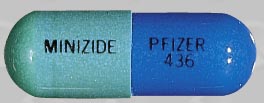Polythiazide/prazosin Interactions
There are 514 drugs known to interact with polythiazide/prazosin, along with 13 disease interactions, and 2 alcohol/food interactions. Of the total drug interactions, 21 are major, 465 are moderate, and 28 are minor.
- View all 514 medications that may interact with polythiazide/prazosin
- View polythiazide/prazosin alcohol/food interactions (2)
- View polythiazide/prazosin disease interactions (13)
Most frequently checked interactions
View interaction reports for polythiazide / prazosin and the medicines listed below.
- Abilify (aripiprazole)
- Adderall XR (amphetamine / dextroamphetamine)
- Adenocard (adenosine)
- Advil (ibuprofen)
- Allegra (fexofenadine)
- Anoro Ellipta (umeclidinium / vilanterol)
- Aristada (aripiprazole)
- Aspirin Low Strength (aspirin)
- Ativan (lorazepam)
- Aubagio (teriflunomide)
- Bactrim (sulfamethoxazole / trimethoprim)
- Bentyl (dicyclomine)
- BuSpar (buspirone)
- Cardizem (diltiazem)
- Celexa (citalopram)
- CellCept (mycophenolate mofetil)
- Cymbalta (duloxetine)
- D3 (cholecalciferol)
- Depakote (divalproex sodium)
- Haldol (haloperidol)
- Lasix (furosemide)
- Mirapex (pramipexole)
- Norco (acetaminophen / hydrocodone)
- Protonix (pantoprazole)
- Remeron (mirtazapine)
- Seroquel (quetiapine)
- Thorazine (chlorpromazine)
- Vitamin D3 (cholecalciferol)
- Xanax (alprazolam)
- Zoloft (sertraline)
Polythiazide/prazosin alcohol/food interactions
There are 2 alcohol/food interactions with polythiazide / prazosin.
Polythiazide/prazosin disease interactions
There are 13 disease interactions with polythiazide / prazosin which include:
- anuria
- electrolyte losses
- liver disease
- lupus erythematosus
- renal function disorders
- hypotension
- liver disease
- asthma
- diabetes
- hyperlipidemia
- hyperparathyroidism
- hyperuricemia
- thyroid function tests
More about polythiazide / prazosin
- Compare alternatives
- Side effects
- Dosage information
- During pregnancy
- Drug class: antiadrenergic agents (peripheral) with thiazides
Related treatment guides
Drug Interaction Classification
| Highly clinically significant. Avoid combinations; the risk of the interaction outweighs the benefit. | |
| Moderately clinically significant. Usually avoid combinations; use it only under special circumstances. | |
| Minimally clinically significant. Minimize risk; assess risk and consider an alternative drug, take steps to circumvent the interaction risk and/or institute a monitoring plan. | |
| No interaction information available. |
See also:
Further information
Always consult your healthcare provider to ensure the information displayed on this page applies to your personal circumstances.


